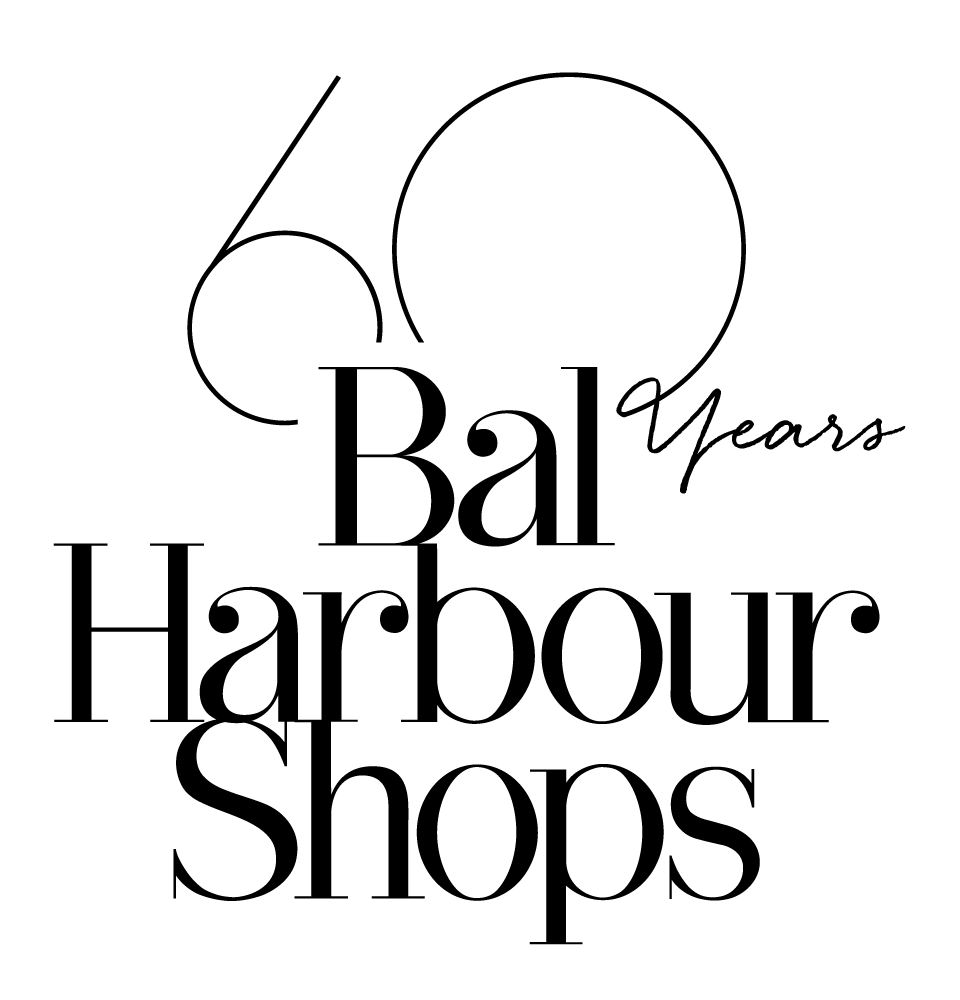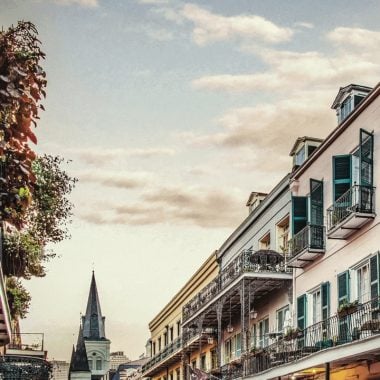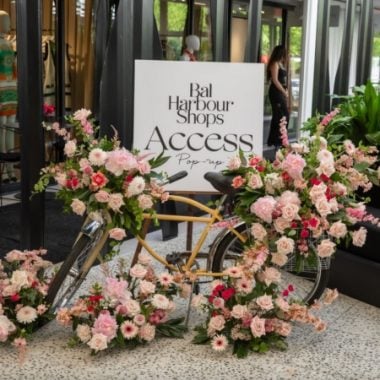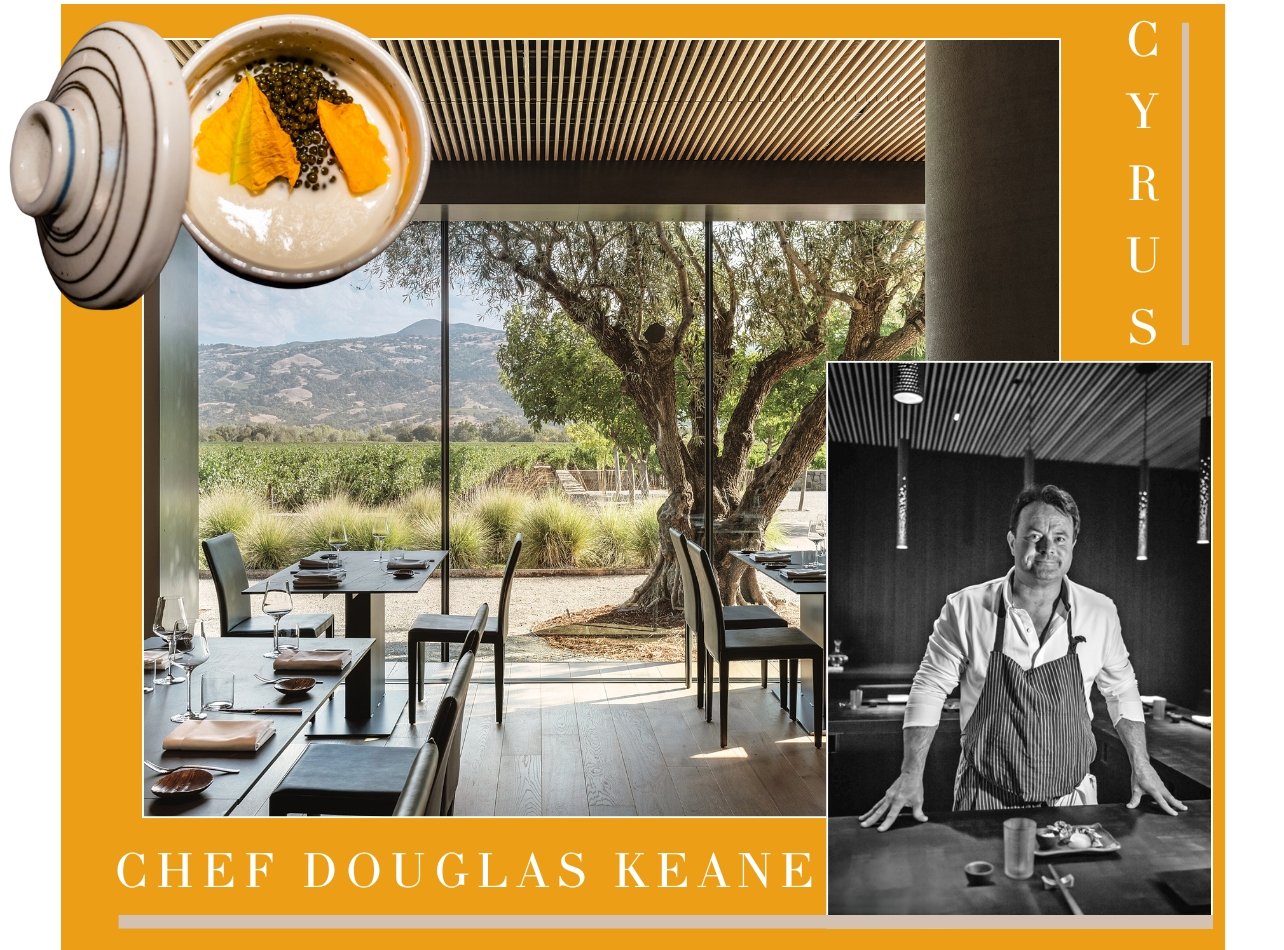
“I wanted to evoke a feeling of going to a dinner party at a friend’s house,” says Douglas Keane of the way he approached Cyrus. Photo by Brianna Danner.
Douglas Keane is a highly decorated chef. His restaurant, Cyrus, is Michelin-starred. He has multiple four-star San Francisco Chronicle reviews. He has a James Beard Award for Best Chef Pacific and was a Top Chef Masters winner. Earlier this year he released his memoir, “Culinary Leverage: A Journey Through the Heat,” a darkly humorous, brutally honest snapshot of his 30 years in the restaurant industry, and recently, Keane and his restaurant were the subject of a Harvard Business School Case Study.
“Cyrus is arguably one of the world’s most innovative gourmet dining business models,” says UPS Foundation Professor Emeritus James L. Heskett, author of the HBS study and more than 200 others. “When you have a memorable business exercising unorthodox policies that produce outstanding results for clients, the team members, and the investors, I like to think of it as a trifecta of success.”
Keane originally opened Cyrus in 2004 in Healdsburg, a small town in Sonoma’s wine country. Following a lease dispute with the landlord that dragged on for several years, he closed shop in 2012 and set out to find a new home for his then–two-Michelin starred restaurant. That ultimately took a decade, but the hiatus allowed Keane the time and space to reconsider just about everything “normal” in the restaurant industry.
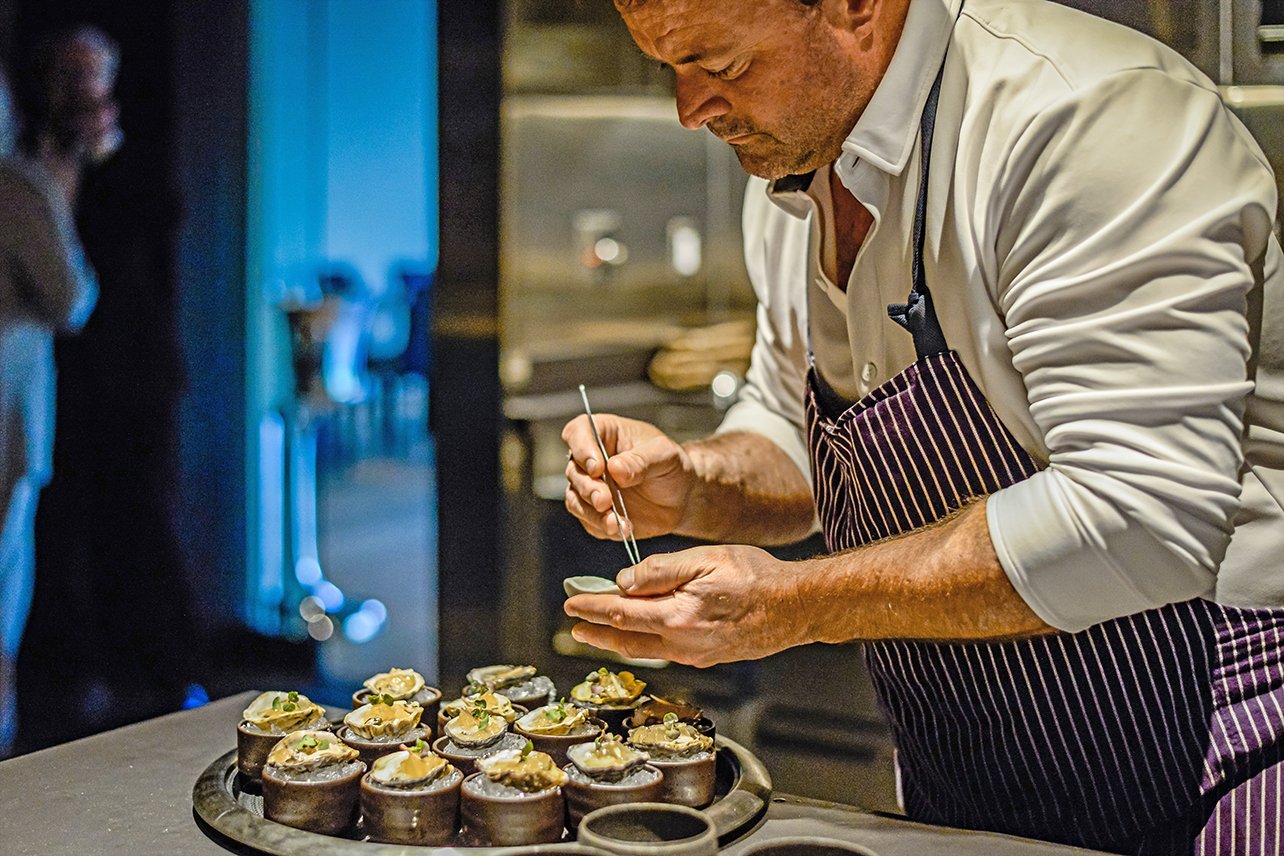
Chef Douglas Keane plating Kushi oysters. Photo by Cynthia Glassell.
A 1993 graduate of Cornell University’s School of Hotel Administration, Keane worked in some of New York (Four Seasons, Lespinasse) and San Francisco’s (Jardinière, Gary Danko) premier restaurants, witnessing firsthand the long-entrenched dysfunctional model of low wages and brutal hours. “My motivation wasn’t just to make lives better, it was to make a healthier industry for everyone,” he says. So he started backwards, as he puts it, with the new Cyrus in Geyserville, a blink-and-you’ll-miss-it town about eight miles north of the restaurant’s original location. “We asked, What’s the number that someone can afford to live on here? That’s what we’re gonna pay them. How many people can we afford to have? OK, let’s hire that many then. The [old] staffing model, the pace, and the inefficiency of the kitchen being super-busy at times, and then not busy at others, just didn’t make sense.”
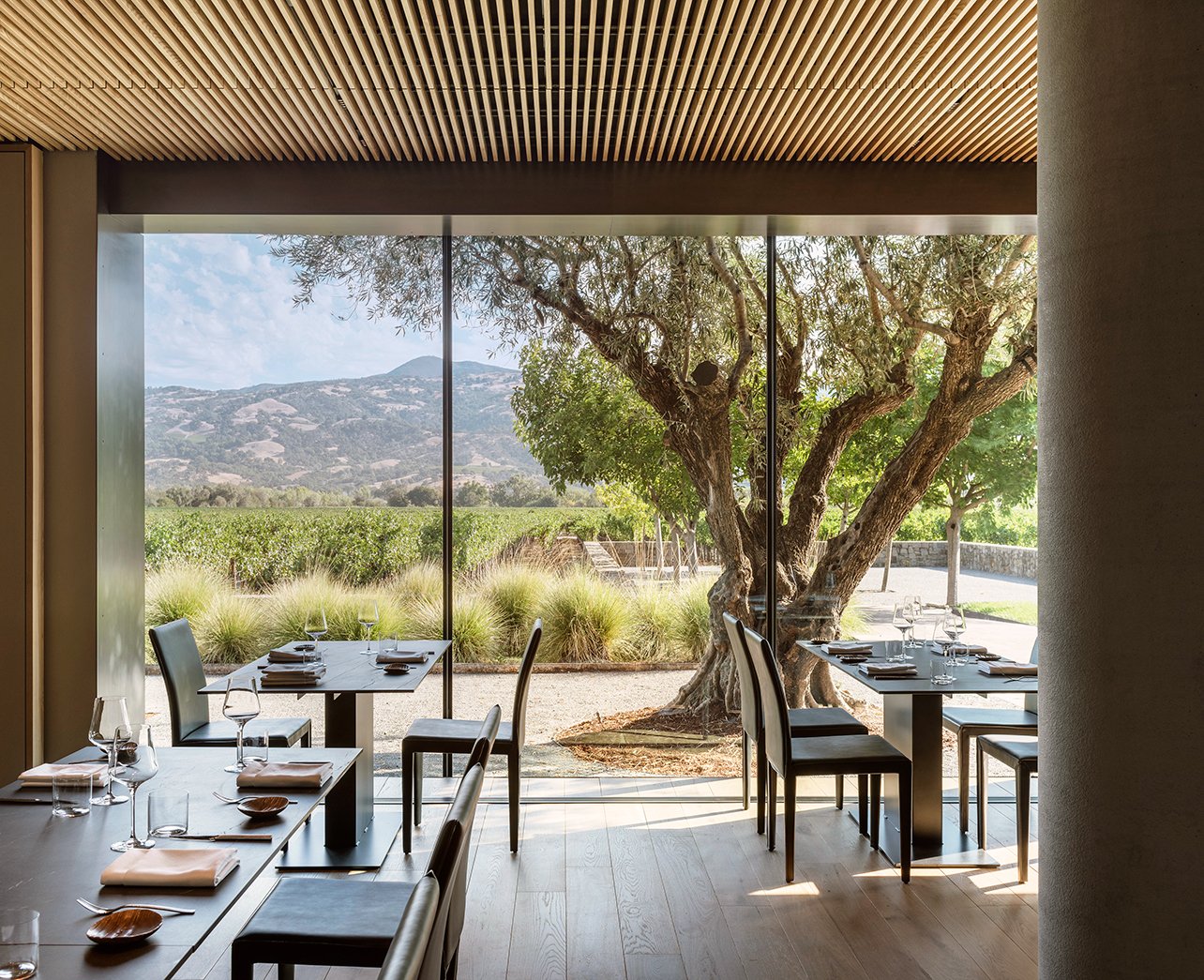
The dining room at Cyrus was designed to “float” above the vineyards. Photo by Brianna Danner.
According to Heskett, it was all about finding the right people: the ones who wanted to learn and grow. “If people are willing to do anything that needs to be done, presumably you can do the same thing with fewer people, and then you can pay them well.” A wide smile spreads across Keane’s face as he notes that nearly all of his original hires who opened Cyrus with him in September 2022, are still on staff. “They’ll all get their paid three-week vacations this year!”
Keane is a true hospitality man in the sense that he wants to care for others, and he wants guests to have a truly meaningful experience at his restaurant. “Fancy places like Cyrus can be intimidating, and I don’t want that,” he says. “I want it to be beautiful and delicious and as close to perfect as possible, but I don’t want you to think we take ourselves too seriously. Let’s laugh, let’s connect… if you want.”
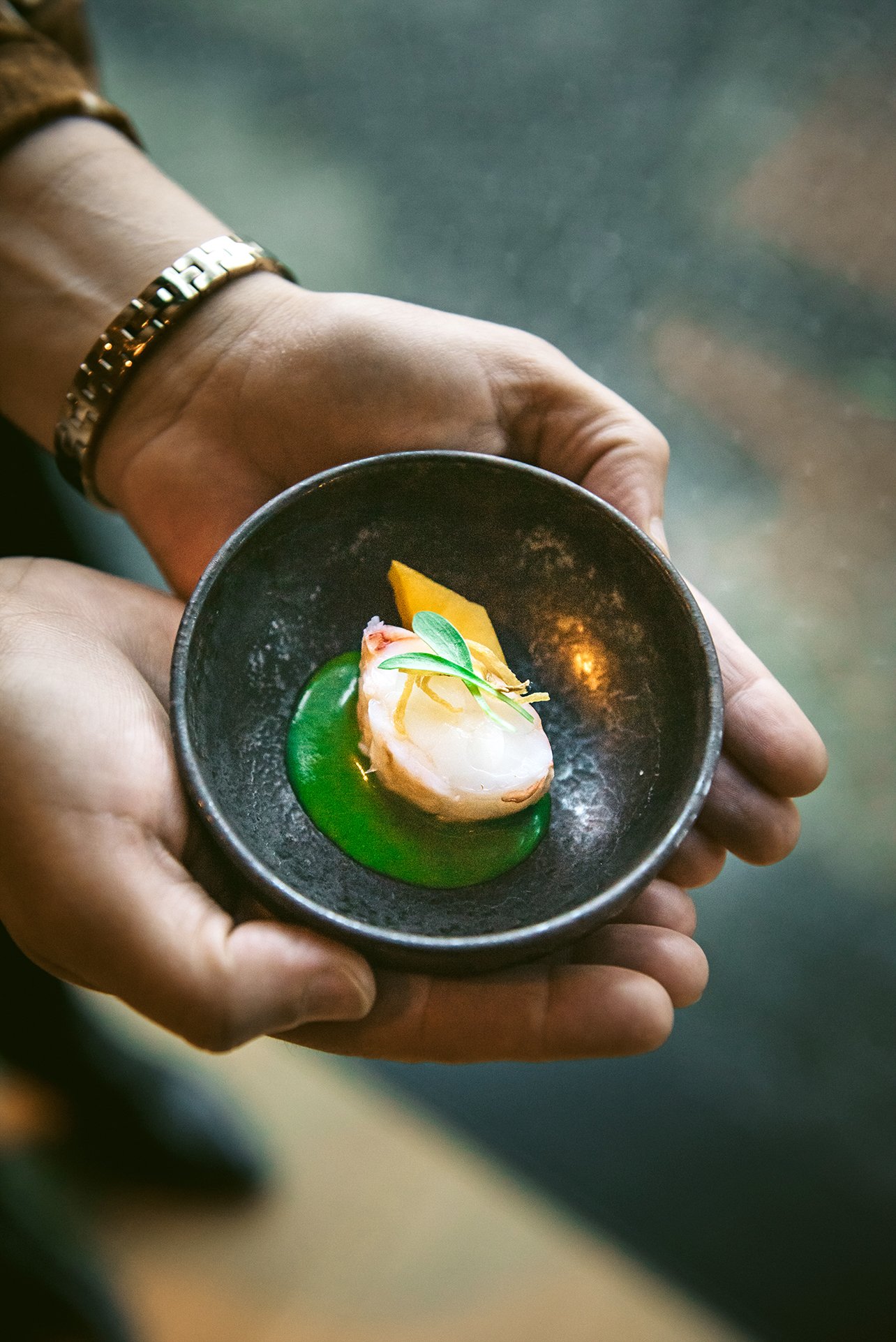
Lobster with avocado and Thai basil dressing.
Cyrus has a warm glow that is instantly transporting. The restaurant appears to float above the surrounding vineyards—an intentional design element by architecture firm Olson Kundig, which closely collaborated with Keane and his partners Maitre’d Nick Peyton (who’s also part-owner) and Chef Drew Glassell to achieve the radical construction. “I wanted to evoke a feeling of going to a nice dinner party at a friend’s house,” says Keane. “Have canapés and drinks in the living room, maybe take a walk out into the garden. Then move into the kitchen, watch them cook a little, and then sit down in the dining room.”
The kitchen was built to accommodate guests, with wide walkways and a large U-shaped butcher block table where the majority of the meal service is presented overlooking all the culinary action. “I notice that after people take a stroll around the kitchen and talk to a few team members, there is a different connection between us all,” Keane explains. “We actually have achieved that feeling of having someone in our house who is relaxed and has become a friend. It’s pretty amazing and beautiful.”
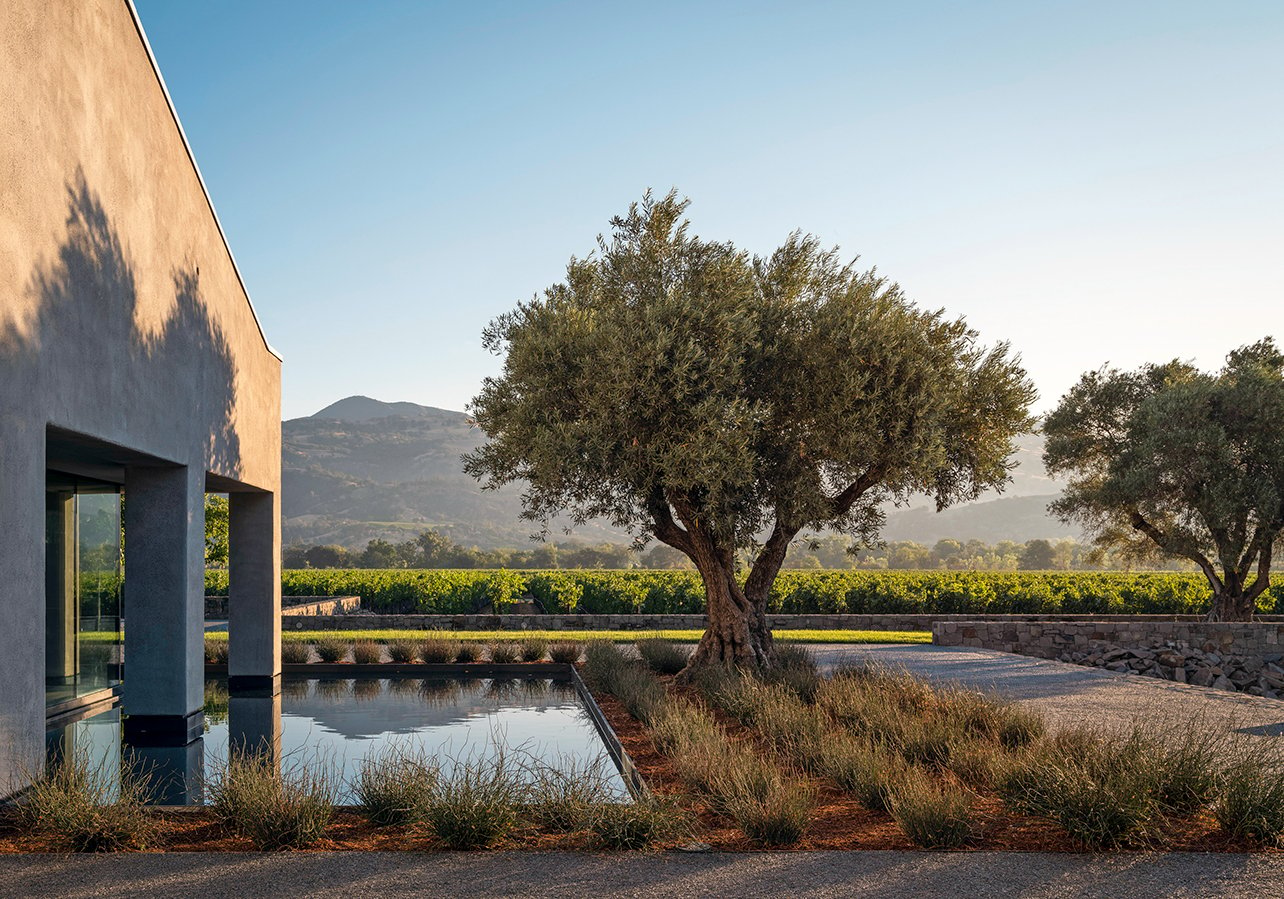
Keane and partner Nick Peyton worked closely with architecture firm Olson Kundig on the restaurant’s design.
Keane says he has tried to pull himself away from being the only personality at Cyrus. “I definitely had the vision, but I also want it to survive without me. Like if I died tomorrow, I don’t want this thing to go.” He began having the captains and some of the cooks do the introductions. “Then I say hi and do stuff and help plate,” he says, “but I stand a little bit back watching as the cooks and guests talk. The interaction is genuine. [Diners are] asking about the wasabi, where it’s from, and what’s that fish? The cooks do a great job explaining, because it’s their life, right? They live this every day. That’s what I wanted. I wanted to give people that insight. It works. There’s a genuineness to it.” As one cook shares his enthusiasm for “the foraging game,” talking about the maple-like Candy Cap mushrooms he is using in his take on the traditional French Mont Blanc cake, another is busy freeze- drying fermented carrot juice with liquid nitrogen that would later be served atop an oyster like a smattering of bright orange pearls. “I notice people’s faces as they bite into things,” says Keane. “And if I see that true look of enjoyment, that’s worth everything.”
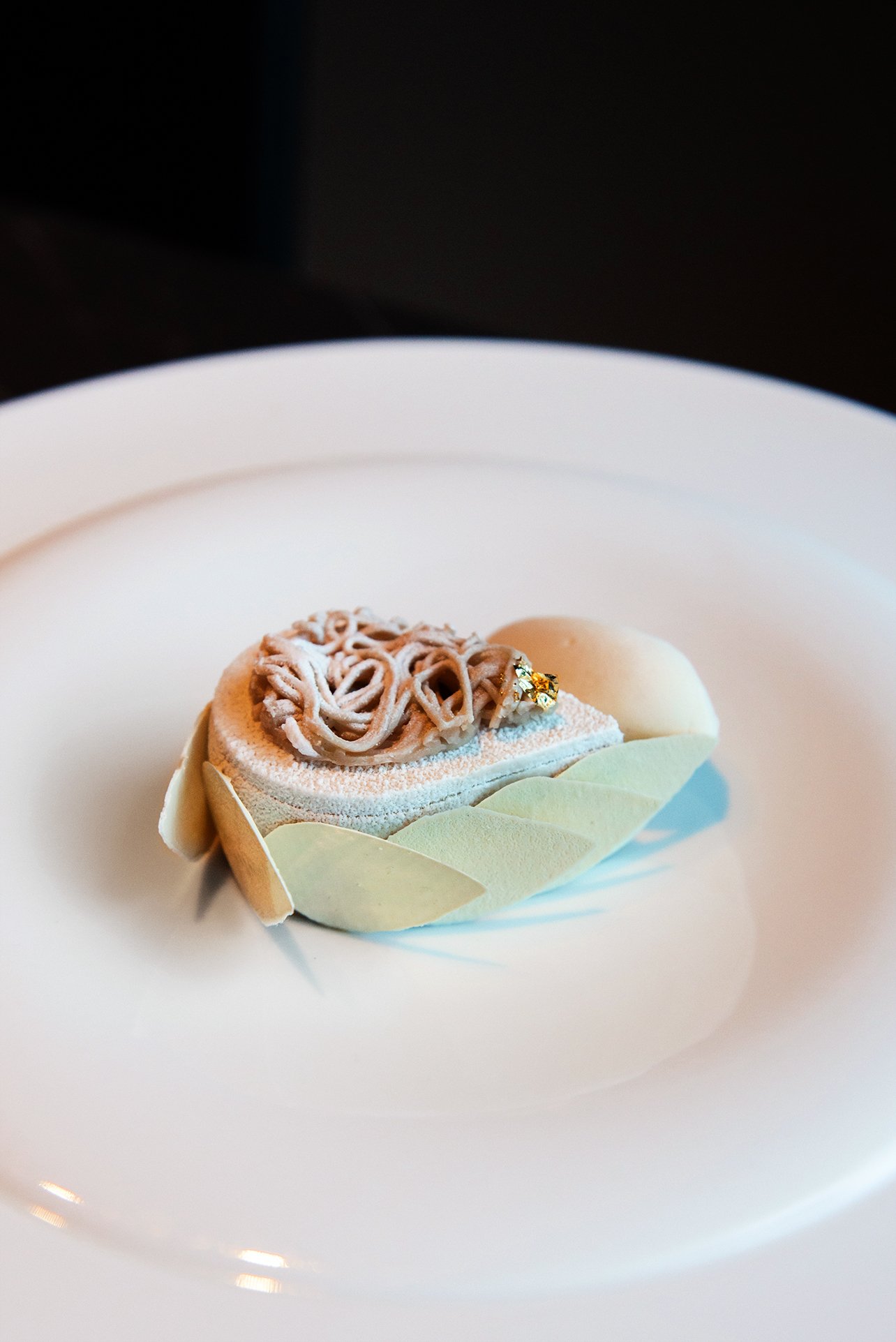
Pastry Chef Josh Gaulin’s Mont Blanc cake, made from chestnuts, candy cap mushrooms, and parsnips.
The set 20-course menu and relatively small number of guests (four 12-person seatings, four nights a week) also contribute to this formula’s success, according to Heskett. Yet it’s clear that the legacy of Cyrus isn’t solely confined to the impressive display of flavors and ingredients masterfully assembled in this restaurant. It’s in the connections being made here, amplifying a functional, jovial, and profitable new restaurant model that came from simply asking Why?
All images courtesy of Cyrus.
